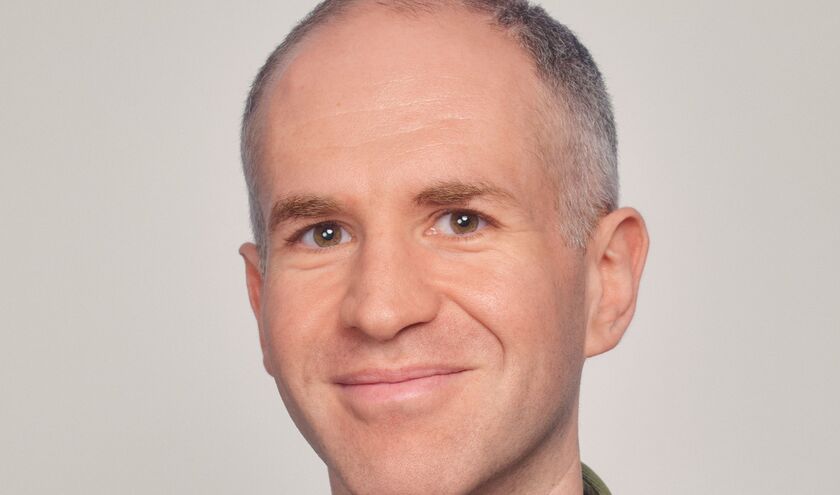It's been six months since the Government announced the abolition of NHSE in what Prime Minister Keir Starmer described as a move to ‘cut bureaucracy' and bring management of the health service ‘back into democratic control'.
The enormously ambitious structural reforms involved cutting the combined NHSE and DHSC workforce by 50% to save ‘hundreds of millions of pounds'.
Under the plans, former NHSE workers are to be absorbed within the DHSC in order to eliminate duplication and create a new leaner centre with each of the NHS regions retained.
Dayan said the process to abolish NHSE was well underway with the DHSC having published a new leadership structure comprising a permanent secretary, chief medical officer and an NHS chief executive.
‘It's a relatively complicated structure within the department itself and they have started to hire some people against the jobs that will create, although it is also true that at the moment NHS England and DHSC still have different roles and different responsibilities,' he said.
Dayan said the goal appeared to be to make the NHS regions ‘much more of an outpost of the DHSC'.
He said NHS regions will take on more ICB responsibilities, including some elements of performance management, noting ‘some of the envisioned role for ICBs includes overseeing performance delivery and the centre will be doing that as well, as well as regional workforce responsibilities, which have been removed from ICBs and other broader DHSC responsibilities including elements of public health'.
When looking at the pros and cons of the new structure, Dayan acknowledged there was a ‘degree of duplication' currently so that it was reasonable to assume a reduction in headcount could deliver significant savings. Along with the reductions in ICB workforce, Dayan said around 20,000 jobs could be cut.
The downside, however, Dayan pointed out was whether this would be the right number of staff that the centre needs.
‘A difficult aspect of this is that the headcount cut was announced before most of the other details,' he noted.
‘Whether that is the right number of staff for the things that DHSC and the ICBs are being asked to do, I think it's difficult to be sure at the moment.'
The policy analyst said there was some validity in the argument that reducing the size of the centre will lead to more devolution with more room for providers and local bodies to be autonomous.
‘There is a sense that too much from on high is put on local bodies with the overburdening of priorities,' Dayan said.
The think-tank analyst cautioned cultural change does not always deliver the changes in behaviour, finance and workforce expected, however.
‘It's proven to be really difficult to get to a structure that solves the problems that I think people often hope it will,' he noted.
When asked if the new structure would deliver the devolution and freedoms desired, Dayan said the ‘behaviour of the people involved will be crucial'.
‘At the end of the day, the English NHS is a system that is still very much at the heart of Government, very directly controlled by central Government,' Dayan said.
‘Whether or not ministers really mean it about being more realistic with priorities is something that will determine whether or not there is really more room for realism and local action.'
The policy analyst said there had been some ‘positive signs' with a reduction in the number of targets placed on trusts, however, adding the structure itself could not stop the secretary of state from centralising power if he chose to do so.
Dayan noted Streeting's claims to want to be ‘less hands on', adding: ‘The question is, can that be reconciled with an incredibly expansive agenda and very firm new systems of performance management, such as the league tables we have just seen published.'
Commenting on the delays to redundancies recently announced by ICBs due to a lack of funding, Dayan said: ‘Some ICBs have been given a bit of leeway on their reduction per head running cost as the issue has come to the fore. Whether there's a revised timeframe or things go a little bit slow in some local areas, I don't think we yet know.'
He said the central restructuring had always been targeted to proceed more slowly.
The initial target of NHSE abolition in October 2026 has been set in recognition that it will require a change in law, Dayan noted.
‘NHS legislation can be very unpredictable and who knows how long that will take to go through but there is a lot more time currently to be allowed for the abolition of NHS England at the top of the health service,' he said.
Many concerns have been raised about the potential distraction of such far-reaching structural reform with the NHS constantly fighting fires and facing ambitious performance targets.
Dayan said this was a ‘very valid concern' noting that previous restructures had proved a distraction.
‘It does mean less time spent on implementing other policy changes, so I do think that's a real risk,' he noted.
Addressing progress on forming ICB clusters, Dayan said their large scale meant they were better suited for some things than others.
‘I think their scale does make it slightly difficult to see how they'll be able to work with local authorities at a really local level and service changes in some of the ways that are envisioned,' he noted.
He also raised the question of where the clustering of ICBs left the concept of ‘places'.
‘I think the original idea of places was that that would be a more natural level to do things that involved local government,' he noted.
Concluding, Dayan observed: ‘The reliance on strategic commissioning is what ICBs job is. It does raise a concern perhaps that commissioning has, often in many countries and not just in England or the UK, not delivered changes as big as architects have hoped for.
‘It can be difficult to drive change as commissioners because providers hold the executive power and they hold the information. They're very politically powerful so in some senses that might be a difficult position for ICBs to achieve all they're meant to do.'



